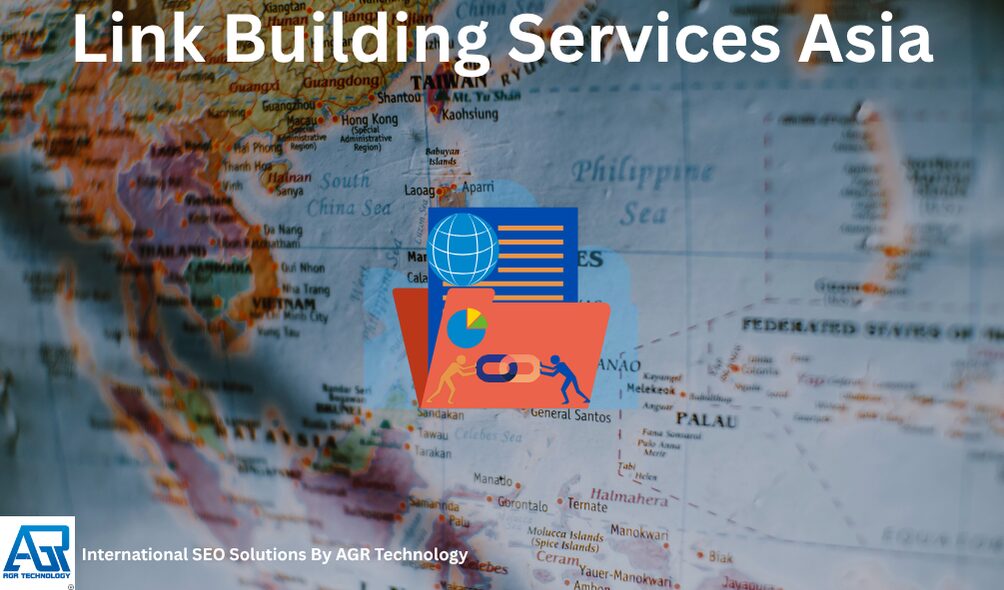Search visibility in Asian markets isn’t just about having a great website, it’s about earning the trust signals that search engines rely on. Link building remains one of the most effective ways to establish authority, improve rankings, and drive targeted traffic in the Asia-Pacific region. But navigating diverse markets from Singapore to Seoul requires a nuanced approach that generic strategies simply can’t deliver.
At AGR Technology, we’ve spent years helping businesses build meaningful digital connections across Asia’s unique online ecosystems. We understand that a backlink strategy that works brilliantly in Australia might fall flat in Thailand, and what resonates in Japan could be completely off-target for Vietnam. This guide breaks down everything you need to know about link building services in Asia, from understanding regional differences to identifying quality providers who deliver real results.
Book a free consultation call with AGR Technology to see how we can help scale your brand with proven SEO strategies
Reviews from some of our happy customers:
Supporting businesses of all sizes to get ahead with digital solutions

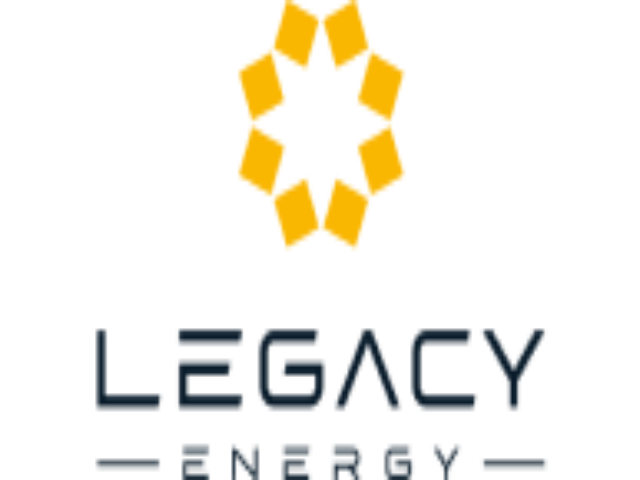
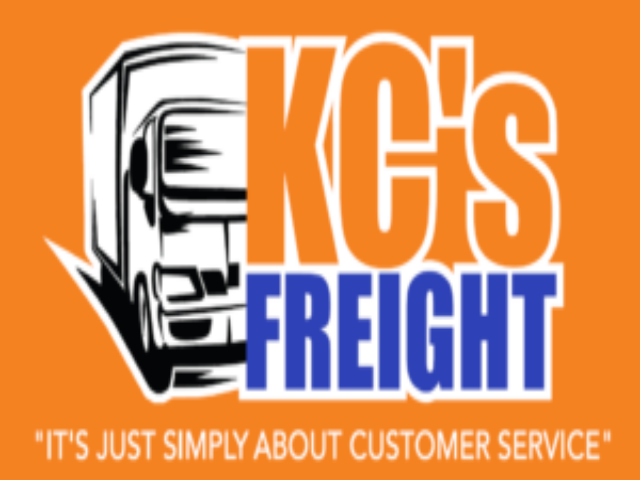

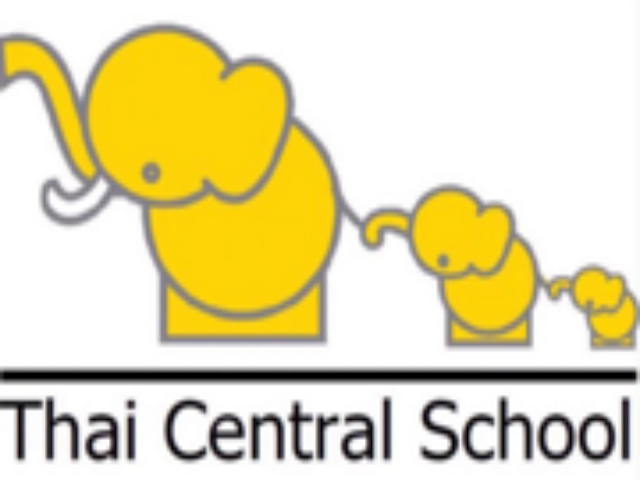

Why work with us?
Why Link Building Matters for Asian Markets

Asia represents some of the world’s fastest-growing digital economies, with internet penetration rates climbing steadily and e-commerce booming across multiple markets. The competition for search visibility is fierce, and link building provides the credibility signals that help your site stand out.
Improved Search Visibility and Organic Traffic
Backlinks act as votes of confidence in the eyes of search engines. When reputable Asian websites link to your content, Google and other search platforms interpret this as validation of your expertise and relevance. This isn’t about gaming the system, it’s about earning recognition from sources that matter in your target markets.
We’ve seen businesses increase their organic traffic by 40-60% within six months through strategic link acquisition campaigns tailored to Asian audiences. The key lies in securing placements on sites that your potential customers actually read and trust, rather than accumulating hundreds of low-quality links that provide zero value.
Search algorithms in Asian markets function similarly to Western ones, but the competitive landscape varies dramatically. In densely competitive markets like Singapore’s fintech sector or Japan’s electronics industry, quality backlinks become essential differentiators that help you break through the noise.
Building Authority in Competitive APAC Regions
Authority isn’t built overnight, particularly in markets where consumers are cautious about new brands and prefer established names. Strategic link building helps accelerate your authority-building process by associating your brand with trusted local publications, industry blogs, and authoritative platforms.
In regions like Southeast Asia, where mobile-first consumption dominates, getting featured on popular mobile news apps or lifestyle websites can dramatically shift brand perception. We focus on placements that not only boost your SEO metrics but also introduce your business to relevant audiences who might become customers.
The compounding effect of authority building through links creates long-term advantages. Each quality backlink strengthens your domain’s overall credibility, making it easier to rank for competitive keywords and maintain visibility even as algorithms evolve.
Types of Link Building Services Available in Asia
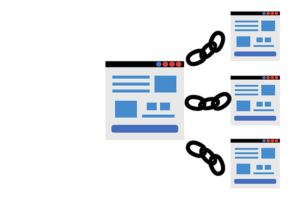
Link building isn’t a one-size-fits-all service. Different approaches work better depending on your industry, target markets, and business objectives. Here’s what’s available across Asian markets.
Guest Posting and Content Placement
Guest posting remains one of the most effective link building methods when executed properly. This involves creating valuable content for relevant websites in your industry, with natural links back to your site embedded within genuinely useful articles.
At AGR Technology, we maintain relationships with hundreds of publishers across Asia, from tech blogs in Bangalore to business publications in Hong Kong. We don’t just pitch generic content, we develop pieces that align with each publication’s editorial standards and provide real value to their readers.
The best guest posts don’t read like advertisements. They offer insights, data, or perspectives that the host site’s audience will genuinely appreciate. When done right, these placements drive referral traffic alongside SEO benefits, creating multiple value streams from a single piece of content.
Niche Edits and Contextual Links
Niche edits involve adding your link to existing, already-published content on relevant websites. This approach can be faster than guest posting since you’re not creating new content from scratch, and it places your links within articles that already have established authority and traffic.
Contextual relevance matters enormously here. We identify pages that naturally align with your offerings and where your link adds genuine value to readers. A poorly placed niche edit stands out awkwardly and can damage rather than help your reputation.
This method works particularly well in Asian markets where some high-authority sites regularly update their evergreen content. We’ve secured powerful contextual placements on industry resources, comparison guides, and educational content that continues driving value months after placement.
Digital PR and Authority Outreach
Digital PR takes link building beyond the SEO department and into brand building territory. This involves creating newsworthy content, conducting original research, or offering expert commentary that earns coverage on news sites, industry publications, and authoritative media outlets.
We’ve helped clients earn features in major Asian publications by developing data-driven studies relevant to local markets, offering timely expert insights during industry shifts, and creating visual content that journalists actually want to reference.
The links earned through digital PR carry exceptional weight because they’re genuinely editorial, publications choose to link because your content or expertise adds value to their stories. This approach requires more investment upfront but delivers the highest-quality backlinks available in Asian markets.
Key Considerations When Choosing Link Building Services in Asia
Not all link building services deliver equal value, and choosing the wrong provider can waste budgets or even harm your search rankings. Here’s what to evaluate.
Understanding Regional Market Differences
Asia isn’t a monolith. Marketing strategies that resonate in Mumbai differ dramatically from those that work in Manila or Shanghai. Quality link building services understand these nuances and adapt their approach accordingly.
Language presents an obvious consideration, securing links from Mandarin, Japanese, Korean, Thai, or Vietnamese sites requires native-level language capabilities and cultural understanding. But it goes deeper than translation. Consumer behaviour, search engine preferences, and content consumption patterns vary significantly across markets.
We tailor link building campaigns to each market’s unique characteristics. In China, where Google has minimal presence, we focus on Baidu-optimised strategies. In Japan, where trust and formality matter enormously, we emphasise relationship building with established publishers. In Southeast Asian markets, we leverage the region’s mobile-first, social-media-driven landscape.
Quality Metrics: Domain Authority, Relevance, and Trust Signals
Not all backlinks contribute equally to your SEO success. Three factors determine link quality: the linking site’s authority, its relevance to your business, and its trustworthiness in the eyes of search engines.
Domain Authority (DA) provides a useful baseline metric, but we don’t chase DA scores blindly. A link from a DA 40 site that’s highly relevant to your industry typically outperforms one from a DA 60 general directory with no topical connection.
Trust signals matter increasingly as search algorithms become more sophisticated. We evaluate linking sites for spam indicators, unnatural link patterns, and content quality issues that might trigger search engine penalties. At AGR Technology, we only pursue placements that we’d be proud to have associated with our clients’ brands.
Relevance extends beyond broad industry categories. If you sell project management software for construction firms, a link from a construction industry blog carries more weight than one from a general business site, even if the latter has higher DA.
White Hat vs. Black Hat Link Building Practices
The link building industry unfortunately includes providers who employ risky tactics that violate search engine guidelines. These black hat practices might deliver short-term gains but create long-term risks including search penalties that can devastate your online visibility.
Common black hat tactics include buying links from link farms, using private blog networks (PBNs), automating mass link submissions, and employing aggressive anchor text manipulation. While some providers still offer these services, the risks far outweigh potential benefits.
We exclusively employ white hat link building methods that align with search engine guidelines. This means earning links through genuine value creation, building real relationships with publishers, and creating content that sites want to link to naturally. It takes longer, but it builds sustainable search visibility that won’t disappear after the next algorithm update.
Link Building Strategies for Specific Asian Markets

Effective link building in Asia requires market-specific approaches. Here’s what works in key regions.
Southeast Asia: Singapore, Thailand, and Vietnam
Southeast Asian markets present unique opportunities for businesses looking to establish regional presence. These markets are characterised by rapid digital adoption, young populations, and increasing consumer spending power.
In Singapore, English-language content dominates, making it easier for international businesses to secure relevant placements. We focus on the city-state’s strong business publications, tech blogs, and industry-specific platforms that serve ASEAN audiences. Singapore also serves as a gateway to broader Southeast Asian markets, with many regional publications based there.
Thailand’s market requires Thai-language capabilities for maximum impact. We work with local publishers across lifestyle, tourism, technology, and business sectors. The Thai market responds particularly well to visual content and influencer partnerships that can generate both links and social signals.
Vietnam represents one of Asia’s fastest-growing digital economies. With a young, mobile-savvy population, Vietnamese businesses and consumers are increasingly online. We secure placements on Vietnamese news sites, business publications, and industry blogs, with content that acknowledges the market’s unique preferences and business culture.
East Asia: China, Japan, and South Korea
East Asian markets present more complexity but also represent enormous opportunities for businesses that get the strategy right.
China’s digital ecosystem operates largely separately from the global internet. Baidu dominates search, and link building strategies must account for this platform’s unique algorithm factors. We work with Chinese publishers and platforms that carry weight with Baidu, focusing on relevance, content quality, and natural link integration. Understanding Chinese internet regulations and content sensitivities is essential.
Japan’s market values quality, trustworthiness, and established relationships above almost everything else. Aggressive link building tactics that might work elsewhere typically fail in Japan. We take a relationship-first approach, building connections with Japanese publishers over time and earning placements through genuine value delivery. Japanese-language content must meet high standards of formality and precision.
South Korea’s highly connected, tech-savvy population creates opportunities for businesses in technology, entertainment, beauty, and lifestyle sectors. We secure placements on Korean blogs, news sites, and industry publications, recognising that Naver (Korea’s dominant search engine) weights different factors than Google. Korean consumers respond well to detailed, comprehensive content that demonstrates expertise.
What to Expect from Professional Link Building Services
Understanding the service process helps you evaluate providers and set realistic expectations for results.
Typical Service Process and Timeline
Professional link building services follow a structured process that begins with understanding your business, industry, and target markets. At AGR Technology, we start every engagement with a detailed audit of your current backlink profile, competitive analysis, and identification of link opportunities specific to your Asian target markets.
The outreach and placement phase typically takes 4-8 weeks for initial links to appear, depending on the service type. Guest posting requires content creation, editorial review, and publication scheduling. Digital PR campaigns may take longer to generate results but can produce multiple high-authority placements from a single campaign.
Quality link building is inherently slower than low-quality alternatives. Publishers worth getting links from maintain editorial standards, review submissions carefully, and don’t publish content immediately. We’ve found that clients who understand this timeline and commit to sustainable strategies see the best long-term results.
Results begin appearing in search rankings typically 6-12 weeks after links are published, as search engines crawl the new links, evaluate their quality, and adjust rankings accordingly. The cumulative effect builds over time, month six of a campaign typically delivers better results than month two.
Reporting and Transparency Standards
Transparency separates professional link building services from questionable providers. You should know exactly where your links come from, what metrics those sites carry, and how placements align with your strategy.
We provide detailed monthly reports showing every secured link, the metrics of each linking domain, the anchor text used, and the specific page where your link appears. We also track ranking improvements for your target keywords and changes in your overall domain authority.
Avoid providers who are vague about their link sources or who promise specific ranking improvements. Search engine algorithms are too complex and variable for anyone to guarantee specific ranking positions. What we can promise is quality work, strategic placements, and a process that follows search engine guidelines.
Common Link Building Mistakes to Avoid in Asian Markets
Even well-intentioned link building efforts can go wrong. Here are mistakes we frequently see businesses make when building links in Asian markets.
Ignoring language and cultural nuances tops the list. Machine-translated content stands out immediately to native speakers and damages your credibility with publishers. If you’re targeting Japanese markets, invest in native Japanese content creators who understand the cultural context, not just the language.
Chasing quantity over quality remains a persistent problem. Fifty links from low-authority, irrelevant sites deliver far less value than five placements on highly relevant, authoritative platforms in your industry. Search algorithms have become sophisticated enough to devalue bulk low-quality links, making this strategy ineffective and potentially harmful.
Neglecting mobile optimisation is particularly problematic in Asian markets, where mobile internet usage often exceeds desktop. If the sites linking to you aren’t mobile-friendly, or if your site provides a poor mobile experience, you’ll miss the opportunity to convert traffic into customers.
Using identical anchor text repeatedly triggers spam filters. Natural link profiles include varied anchor text, branded terms, naked URLs, generic phrases like “click here,” and exact-match keywords. We ensure anchor text distribution looks organic and doesn’t raise red flags.
Failing to vet link sources properly can result in associations with spammy sites or link networks that trigger search penalties. We thoroughly evaluate every potential link source before pursuing placement, checking for spam indicators, unnatural link patterns, and content quality issues.
How to Evaluate Link Building Service Providers
Choosing the right link building partner significantly impacts your results. Here’s what to look for when evaluating providers.
Ask about their specific experience in your target Asian markets. General link building expertise doesn’t automatically translate to understanding Vietnamese consumer behaviour or navigating Japan’s publisher landscape. At AGR Technology, our team includes specialists with deep market knowledge across the Asia-Pacific region.
Request case studies or examples of previous work in markets similar to yours. Quality providers can demonstrate successful campaigns without compromising client confidentiality. Look for evidence of ranking improvements, traffic growth, and most importantly, business results.
Evaluate their transparency about methods. If a provider is vague about how they secure links or unwilling to share examples of linking sites, that’s a red flag. We happily show potential clients the types of sites we work with and explain our outreach process in detail.
Check whether they offer customised strategies or just package deals. Your business has unique needs, competitive dynamics, and target audiences. Cookie-cutter link building packages rarely deliver optimal results. We develop customised strategies that align with your specific objectives and market conditions.
Understand their pricing structure and what’s included. Extremely cheap link building services typically rely on low-quality tactics that create more risk than value. Quality link building requires investment in relationship building, content creation, and strategic outreach. Our pricing reflects the genuine work required to secure valuable placements.
Ask about their reporting standards. You should receive regular, detailed reports showing every link secured, with full transparency about metrics and placement context. Providers who offer only vague summaries or aggregate metrics may be hiding low-quality work.
Conclusion
Link building in Asian markets requires more than generic outreach, it demands cultural understanding, market-specific strategies, and commitment to quality over quick wins. The diversity across Asia means that success in Singapore doesn’t guarantee success in Seoul, and strategies that work in Thailand may need significant adaptation for Taiwan.
At AGR Technology, we’ve built our link building services around deep regional expertise, transparent processes, and genuine relationship building with publishers across Asia. We don’t chase vanity metrics or employ risky tactics that jeopardise your long-term search visibility. Instead, we focus on securing placements that deliver real SEO value, drive targeted traffic, and strengthen your brand’s authority in your target markets.
Whether you’re expanding into Southeast Asian markets, establishing presence in East Asia, or looking to strengthen your existing foothold across the region, strategic link building provides the foundation for sustainable search visibility and organic growth.
Ready to build quality backlinks that actually move the needle in Asian markets? Get in touch with AGR Technology today to discuss how our link building services can support your growth objectives across the Asia-Pacific region. We’ll develop a customised strategy that aligns with your business goals and delivers measurable results.
Frequently Asked Questions
What are link building services in Asia and why do businesses need them?
Link building services in Asia help businesses earn backlinks from reputable Asian websites to improve search rankings and authority. They’re essential because Asian markets are highly competitive, and quality backlinks act as trust signals that help sites stand out in diverse regional ecosystems from Singapore to Seoul.
How long does it take to see results from link building services in Asian markets?
Initial links typically appear within 4-8 weeks, while search ranking improvements become visible 6-12 weeks after publication. Most businesses see significant organic traffic increases of 40-60% within six months when using strategic link acquisition campaigns tailored to Asian audiences.
What is the difference between white hat and black hat link building practices?
White hat link building earns links through genuine value creation and follows search engine guidelines, ensuring sustainable visibility. Black hat tactics like buying links from link farms or using private blog networks may offer short-term gains but risk severe search penalties that can devastate online visibility.
Why do link building strategies need to differ across Asian countries?
Asian markets have distinct languages, search engines, consumer behaviors, and cultural preferences. A strategy that works in Australia may fail in Thailand, while Japan values formality and trust differently than Vietnam. China requires Baidu-focused tactics, while South Korea prioritizes Naver optimization.
How do you measure the quality of a backlink in Asian markets?
Quality backlinks are evaluated by three key factors: the linking site’s domain authority, its topical relevance to your business, and trust signals like content quality and natural link patterns. A relevant lower-authority site often outperforms an irrelevant high-authority general directory for SEO value.
Can link building help with mobile traffic in Asia-Pacific regions?
Yes, link building is particularly effective in mobile-first Asian markets where mobile internet usage dominates. Strategic placements on popular mobile news apps and lifestyle websites in Southeast Asia can dramatically increase brand visibility and drive targeted mobile traffic to your business.

Alessio Rigoli is the founder of AGR Technology and got his start working in the IT space originally in Education and then in the private sector helping businesses in various industries. Alessio maintains the blog and is interested in a number of different topics emerging and current such as Digital marketing, Software development, Cryptocurrency/Blockchain, Cyber security, Linux and more.
Alessio Rigoli, AGR Technology
![logo-new-23[1] logo-new-23[1]](https://agrtech.com.au/wp-content/uploads/elementor/thumbs/logo-new-231-qad2sqbr9f0wlvza81xod18hkirbk9apc0elfhpco4.png)
